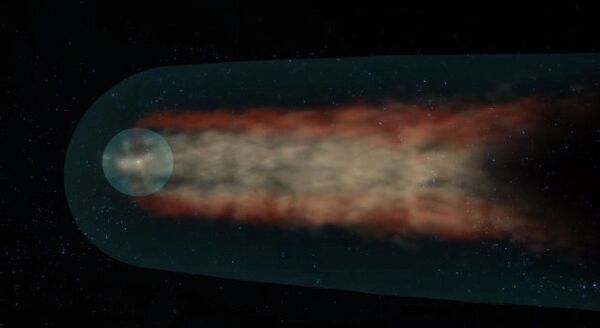WASHINGTON, July 11 (RIA Novosti) – NASA scientists have proved that that the solar system has a tail like that of a comet, the US space agency announced this week.
NASA researchers for the first time ever have mapped a so-called “heliotail” consisting of fast- and slow-moving particles that is streaming behind the solar system, though it is roughly in the shape of a four-leaf clover rather than a long, thin streak trailing a comet across the sky, NASA said Wednesday.
The mapping of the solar system’s tail was made possible by data from NASA’s Interstellar Boundary Explorer (IBEX), a spacecraft the size of a coffee table that collected observations of the boundaries of the bubble surrounding the solar system, known as the heliosphere, the space agency said.
“Scientists have always presumed that the heliosphere had a tail,” Eric Christian, IBEX mission scientist at Goddard Space Flight Center in Maryland, said Wednesday during a Google+ Hangout announcing the findings. “But this is actually the first real data that we have to give us the shape of the tail.”
The findings were published Wednesday in The Astrophysics Journal.
According to researchers, solar winds of particles streaming off the sun inflate the heliotail, which has a four-leaf-clover shape due to fast winds bursting out from near the sun’s poles and slower wind emanating from near the equator of the sun, NBC News reported.
“The tail is our footprint on the galaxy, and it’s exciting that we’re starting to understand the structure of it,” Christian said. “The next step is to incorporate these observations into our models and start the process of really understanding our heliopshere.”




